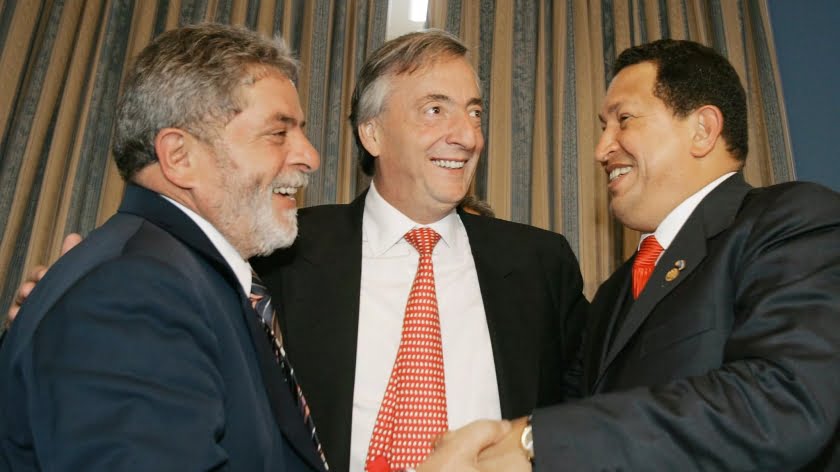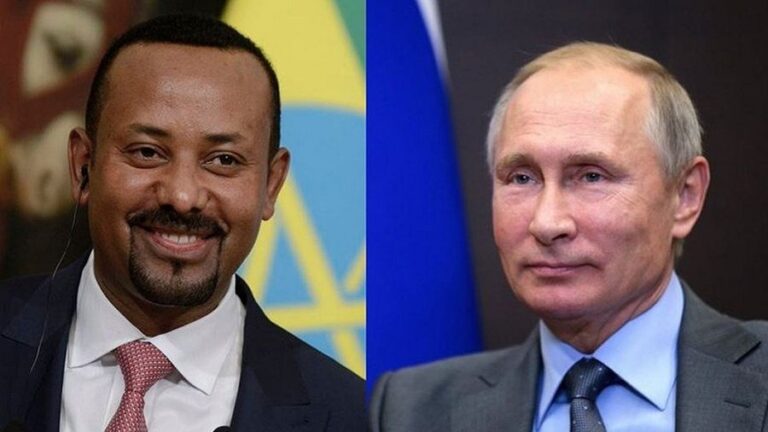Trump’s Trying to Take Down the “Troika of Tyranny”
Bolton’s description of Venezuela, Cuba, and Nicaragua as a “Troika of Tyranny” a few months ago was a declaration of Hybrid War against the last three geopolitically relevant multipolar countries in the hemisphere, and now Trump’s tasked himself with taking down these states by the end of 2019 in order to facilitate the construction of “Fortress America” and boost his reelection prospects.
The New “Axis Of Evil”
Observers should have known that the drums of HybridWar would be beating louder than ever before in the Western Hemisphere after Bolton described Venezuela, Cuba, and Nicaragua as a “Troika of Tyranny” a few months ago, hinting that Trump’s most militant foreign policy priority of 2019 will be Latin America as he attempts to carry out regime changes against its last three geopolitically relevant multipolar countries. The end goal being pursued is the construction of “Fortress America” – the reestablishment of the US’ full and unparalleled dominance over the hemisphere – in order to serve as Washington’s ultimate geostrategic fallback plan in the event that it loses some of its standing in Afro-Eurasia throughout the course of the New Cold War, to say nothing of its interest in simply exploiting this transcontinental region as a resource base and a “captive marketplace” for its companies’ goods.
The Three Amigos
The US’ multipolar Eurasian Great Power rivals of Russia and especially China have been making impressive inroads in this part of the world over the past decade, which is why Washington wants to remove their “access points” by overthrowing the last three remaining geopolitically relevant governments that opened up Latin America’s doors to them. “Operation Condor 2.0”, the author’s term for the region-wide regime change plan that was put into action by the Obama Administration and continued by Trump’s, succeeded in reversing the so-called “Pink Tide” of the mid-2000s and “recapturing” most of the hemisphere, with BRICS-member Brazil being the latest “prize”. All that’s left for the US to do to regain total control over Latin America is to remove Venezuela, Nicaragua, and Cuba from the strategic equation, seeing as how Ecuador “sold out” and landlocked Bolivia is “easily manageable”.
Vanquishing Venezuela
The escalating Hybrid War on Venezuela is rapidly approaching the dangerous point where a military invasion can’t reasonably be ruled out unless the US, Russia, and China strike a secret deal with one another to organize a “phased leadership transition” there under the aegis of an Astana-like conference in exchange for self-appointed “interim president” Juan Guaido respecting his country’s obligations to its multipolar creditors. Considering that the US and its allies are approaching this situation from a position of strategic strength and are able to shape events much more powerfully than Russia or China, the most realistic scenarios at this point in time and given the information available to the public (which admittedly might not present the most accurate picture) appear to be a civil-international war or regime change by force or diplomacy.
Both scenarios imply that Venezuela will probably cease to function as the springboard of multipolar influence in the hemisphere that it once was, essentially neutralizing the intangible regional benefits that Russia and China were obtaining from their strategic partnerships with the Bolivarian Republic. Because of its enormous energy reserves, impressive mineral deposits, large population, and extensive soft power sway, Venezuela is the center of multipolar gravity in Latin America and its fall would likely catalyze a chain reaction of regime changes among its remaining allies, or at the very least make it extremely difficult for them to sustain their previously hard-fought sovereignty. Even in the event that the Hybrid War on Venezuela drags on for longer than expected, the US’ weaponization of sanctions against state oil company PDVSA will cause serious problems for Nicaragua and Cuba.
Knocking Down Nicaragua
Those two states are dependent on subsidized Venezuelan oil to uphold their socialist systems, and the US has already decided to impose “secondary sanctions” against Nicaragua’s Albanisa for its relationship with PDVSA. It shouldn’t be forgotten that the Central American country recently came under serious Hybrid War pressure that was only temporarily alleviated last summer after it agreed to allow the US, Taiwan, and several other countries (including Russia, Venezuela, and Cuba) the right to train their militaries on its territory, though the asymmetrical conflict there could easily heat up again if the Costa Rican-based “Los Atabales” terrorist group soon takes on a similar function as the Honduran-based “Contras” of the Old Cold War. Taken together, the disruption of Venezuelan oil supplies, more “secondary sanctions”, and the possibility of a “Contra” redux could be all that it takes to make Ortega tap out.
Cuba: The Last One Standing?
As for Cuba, the island nation is a much tougher nut to crack after having over half a century of experience foiling the US’ regime change plots against it, though the exploitation of factional divisions within the communist party and an exacerbation of the delicate economic situation there (through “secondary sanctions” against PDVSA’s partners and the possible re-designation of the country as a “state sponsor of terrorism”) might be enough to plant the seeds of unrest during this sensitive time in its transitional post-Castro history. Nevertheless, out of the three countries that comprise the US’ so-called “Troika of Tyranny”, Cuba is the one with the great resilience for socio-political and historical reasons, though even it shouldn’t be assumed to be immune to the regime change intrigue that accompanies “Operation Condor 2.0”.
Concluding Thoughts
The US is dead-set on making Latin America its “backyard” once again after losing a lot of its hegemonic influence ever since the end of the Old Cold War and especially after the rise of the “Pink Tide” in the mid-2000s, though its “Operation Condor 2.0” campaign of rolling regime changes against multipolar states in the hemisphere has greatly enabled it to regain its prior geostrategic supremacy in this transcontinental region as it advances its grand vision of constructing “Fortress America”. Fortuitously for Trump, his country’s latest gains are coinciding with his 2020 reelection campaign, meaning that he has a personal political stake in the outcome of this final phase of the hemispheric Hybrid War. If all goes “according to plan”, then Trump will trumpet the overthrow of the “Troika of Tyranny” as his first term’s most prominent foreign policy “success”.
By Andrew Korybko
Source: Eurasia Future






